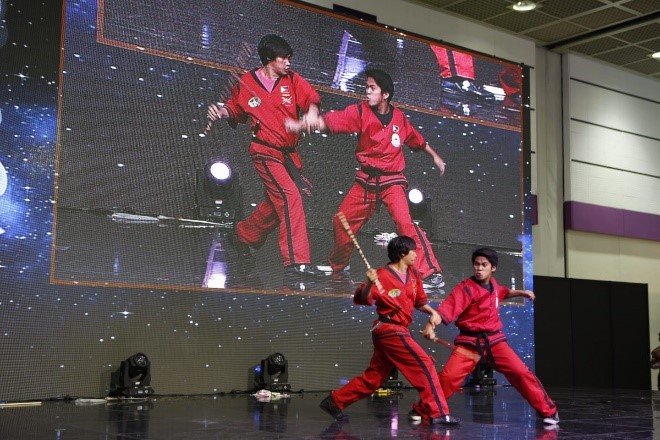
© ICM, 2019 |
|
|
|
|
| General Information |
Eskrima, also known as Arnis or Kali, is a Filipino martial art using sticks, staffs, and bladed weapons. It also includes empty-hand fighting techniques like grappling and weapon disarming skills. Use of short sticks and daggers in Arnis instead of broadswords or spears reflects the art’s pragmatic quality (Paman 2007). Unlike many other Asian martial arts, it does not necessarily place an emphasis on self-discipline and spiritual growth, but on practical and efficient use of skills against threats. Arnis artists typically use two sticks, quickly striking the opponents with one stick while protecting themselves with the other (Ollhoff 2010). |
| History/Development |
Early history of Arnis is not known as the art has been mostly transmitted by word of mouth without written accounts. Many claim that Arnis was originated in Cebu, near Mactan Island where Lapu Lapu and his men defeated Spanish invaders led by the explorer Ferdinand Magellan in 1521. It is known that the Filipinos “fought with spears, swords and sharpened sticks, which is the first reference to the existence of the ancient [Arnis] (Godhania 2010)”.During the colonial rule, Spanish fencing had a significant impact on Filipino fighting arts as the name Eskrima came from Spanish esgrima meaning fencing. To control the Philippines, Spaniards banned practising native fighting arts with bladed weapons and imposed death penalty if violated. This also led Arnis practitioners to use rattan sticks instead of daggers. They soon realised that the sticks could make better and more versatile strikes than those of swordsSome claim stick-based Asian martial arts such as Indian Silambam may also have affected the development of Arnis. |
Transmission
(Policies/institutions) |
Arnis was declared as the National Martial Art and Sport of the Philippines in 2009 through Republic Act 9850, paving the way for promoting Arnis competing with other popular non-Filipino martial arts such as Judo and Taekwondo. |
| Relevant Organisations |
|
| Additional Materials |
|
| References |
- Ollhoff, J. (2010). Martial Arts around the Globe. Minneaspolis, MN: ABDO Publishing Company.
- Green, T. A. & Svinth, J. R. (2010). Martial arts of the world: an encyclopedia of history and innovation (Vol. 2). Santa Barbara, CA: Abc-Clio.
- Godhania, K. (2010). Eskrima Filipino Martial Art. Ramsbury: The Crowood Press.
- Paman, J. G. (2007). Arnis Self-Defense: Stick, Blade, and Empty-Hand Combat Techniques of the Philippines. Berkeley, CA: Blue Snake Books. | | |